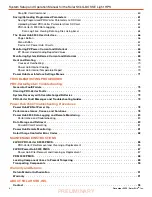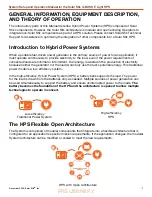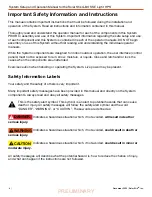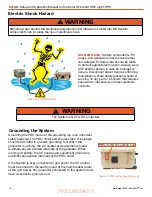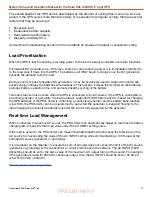
|
7
December 2020
|
Solar Stik
®
, Inc.
System Setup and Operation Manual for the Solar Stik G-BOSS E Light HPS
PRELIMINARY
GENERAL INFORMATION, EQUIPMENT DESCRIPTION,
AND THEORY OF OPERATION
Introduction to Hybrid Power Systems
When a portable fuel-driven power generator is the primary source of power for an application, it
must operate continuously to provide electricity to the load, even if the power requirements of
connected loads are minimal or intermittent. Fuel energy is wasted in the production of electricity
because neither the generator nor the load(s) can fully use the fuel’s potential energy. This traditional
power model is a low-efficiency system.
In the high-efficiency, Hybrid Power System (HPS), a battery bank supports the load. The power
for the load is drawn from the batteries only as needed. Multiple sources of power generation can
be used simultaneously to support the battery and ensure uninterrupted power to the loads.
The
battery becomes the foundation of the HPS and the architecture is opened to allow multiple
technologies to operate in concert
Generator
Load
Fuel
Low-efficiency
Traditional Power System
High-efficiency
HPS
PRO-Verter
Generator
Load
Battery
Fuel
The HPS Flexible Open Architecture
The System is comprised of modular components that integrate into a flexible architecture that is
configured for an application’s specific mission requirements. If the application changes, the modular
System architecture can be modified or scaled to meet the new requirements.
Power Generation
Options
PRO-Verter
Battery
Generator
Load
Fuel
HPS with Open Architecture
The introductory parts of this Manual describe Hybrid Power Systems (HPS) composed of Solar
Stik components. However, the Solar Stik architecture is modular and open allowing Operators to
integrate non-Solar Stik components as part of a HPS solution. Please contact Solar Stik Technical
Support for assistance in optimizing the integration of other components into a Solar Stik HPS.




